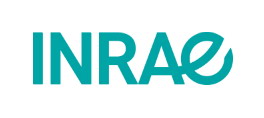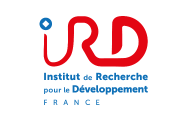Le prochain Vendredi Découverte aura lieu vendredi 10 octobre 2025 à 11h en salle Aquadémie (Site Hydropolis Lavalette) et sur Zoom via le lien ci-après :
https://ird-fr.zoom.us/j/92505334421?pwd=VO5egHPqcS7WnkvENUTsCSUUlHCd9n.1
Sambo Lun nous présentera : "Groundwater evolution in the Cambodian Mekong delta: Investigating the Aquifer Geometry”
Sambo Lun nous présentera : "Groundwater evolution in the Cambodian Mekong delta: Investigating the Aquifer Geometry”
Résumé :
Groundwater in Cambodian Mekong Delta (CMD) has been largely used for domestic to supply about 2.5 million people and partially irrigating 90,000 ha of dried season rice (CDB, 2023). Based on the same data source, there have been 360,000 domestic wells and 43,000 irrigation wells. While iDE reported that the irrigation wells rose from about 1,700 in 1996 to over 13,500 in 2008. This evolution gives speculation of groundwater decline in the area. iDE (2009) reported that there is an average groundwater decline level 0.14 m/year from 1996 to 2008.
Several research projects have been undertaken in the area including USGS (1977), EU/PRASSAC (2005), JICA (2002), World Bank (2005), and private sectors. They drilled well up to 150 m depths but rarely reached the bedrock. IDE did the groundwater simulation with available data from those reports and assuming the depth to bedrock is 200 meters. However recent report (CRC, 2013) suggested that the depth to bedrock can be much deeper than 200 meters. Therefore, this research will apply Time-Domain Electromagnetic (TDEM) as a geophysical tool to map the depth to bedrock.
I adopted the loops 100mx100m, 200mx200m and 300mx300m for prospecting the resistivity values at 177 locations —across approximately 10,000 km² for 5 months from December 2024 to April 2025. I collected sounds from 177 survey locations. The soundings were interpreted in sequences with the advice from Marc Descloitres, and Marie Boucher (IRD-IGE). Preliminary analysis suggests that the bedrock dips eastward, reaching depths greater than 400 meters. In the zone of 300-400-meter depths, there are log sheets drilling to the depth 200 m and 260m, which are not reach out the bedrock.
Several research projects have been undertaken in the area including USGS (1977), EU/PRASSAC (2005), JICA (2002), World Bank (2005), and private sectors. They drilled well up to 150 m depths but rarely reached the bedrock. IDE did the groundwater simulation with available data from those reports and assuming the depth to bedrock is 200 meters. However recent report (CRC, 2013) suggested that the depth to bedrock can be much deeper than 200 meters. Therefore, this research will apply Time-Domain Electromagnetic (TDEM) as a geophysical tool to map the depth to bedrock.
I adopted the loops 100mx100m, 200mx200m and 300mx300m for prospecting the resistivity values at 177 locations —across approximately 10,000 km² for 5 months from December 2024 to April 2025. I collected sounds from 177 survey locations. The soundings were interpreted in sequences with the advice from Marc Descloitres, and Marie Boucher (IRD-IGE). Preliminary analysis suggests that the bedrock dips eastward, reaching depths greater than 400 meters. In the zone of 300-400-meter depths, there are log sheets drilling to the depth 200 m and 260m, which are not reach out the bedrock.
Venez nombreux !






